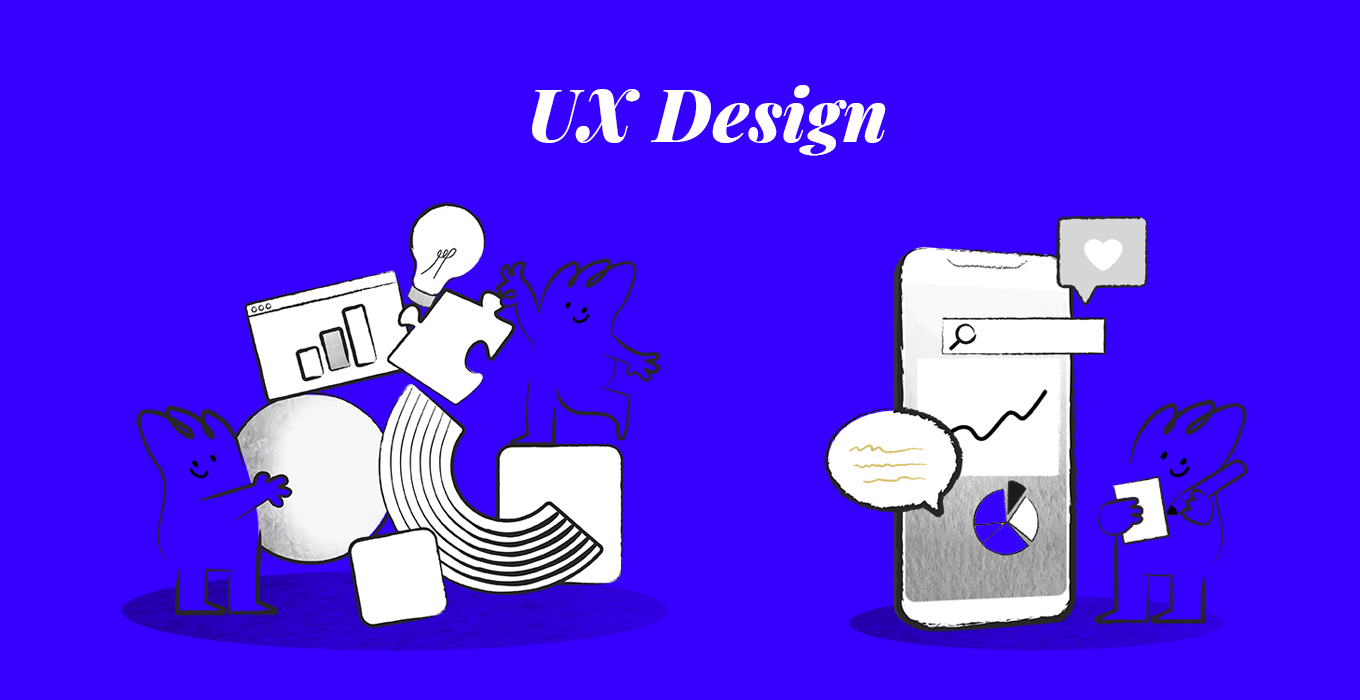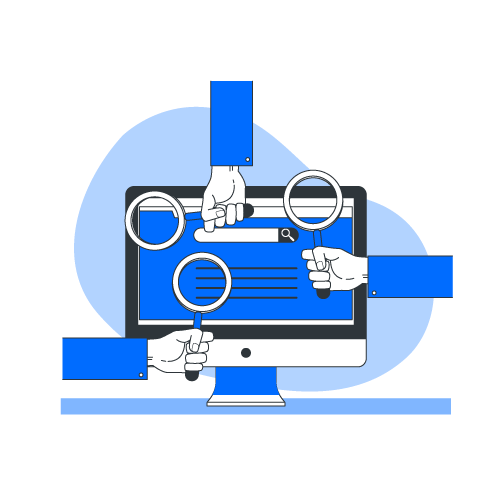
UX design is an important part of the product marketing strategy of any company. It can be the difference between a successful product and a failed product.
As technology advances, it is indeed more difficult to create digital products that are easy to use and accepted by users.
One way to improve the UX design of digital products in your company is to use a prototyping tool like InVision or Axure.
These tools will provide a visual representation of how your final digital product should look through screens and animations, which is very important for developers when creating products.
But we should first discuss what UX design is very popular these days.
Table of Contents
What is UX Design?
UX design is a term used to describe how we interact with digital products in everyday life. Including the process of designing a digital product for users according to their needs and desires.
A UX designer’s job is to create a great user experience using information architecture, interaction design, graphic design principles, and more.
The goal of the task is to create a product that is easy to use and gives a positive impression when people use it so that it continues to be used by users.
UX Design Fundamentals.
UX design spans multiple disciplines, such as information architecture and interaction design.
Information architects are responsible for creating content on websites or mobile applications to be easy to navigate so that users can easily find the information they are looking for.
Interaction designers are responsible for creating attractive products using things like animation, motion graphics, interactive in-game elements, and more.
Why is UX Design Important?
By studying UX design, we can create user interfaces that are easy to use, useful, and reliable.
By designing an elegant interface, UX Designer can create something easy for both users and developers to understand without having to think about how difficult coding a project will be.
Read more article: How To Design a Good Website
This means that the resulting interface design will be simpler, easier to use, saving users time and energy.
UX designers also work closely with designers to develop prototypes so that we know what the result of the interface design we are developing will look like.
How Does a UX Designer Work?
A UX designer is not only responsible for designing a website or app, they are also responsible for the user experience.
Such as considering how people will use it, what their input and questions are, as well as adapting the interface design for different user segments.
UX designers think about all aspects of design but usually have one specific area like information architecture, interaction design, or service design.
They usually have a background in design or human-computer interaction but study other subject areas such as psychology.
By understanding the needs, wants, and boundaries of certain groups with clear goals, designers can create designs that are easily understood by various users and developers.
Here are some things that UX designers do:
- Test prototypes created by designers or other developers in the early stages of designing a digital product.
- Helps determine what needs to be built first before anything else.
- Create a wireframe that shows what the screen looks like.
- Specifies the navigation path on the site or application.
- Analyze potential problems that may occur.
Important Factors In UX Design.
UX designers must have an understanding of the principles and theory underlying their work, so they know how it fits into the wider context. Following are some common concepts in UX Design:
1. User Experience (UX).
How users feel when using something, including aspects such as understanding, satisfaction, or loyalty.
It doesn’t just refer to customers, it includes users at all levels in the organization from executives to developers, marketing specialists, content writers, and more.
2. Usefulness.
The ease with which users feel when using a product or service without experiencing difficulties due to errors or difficulty navigating its pages or features. For example, when you log into your email account, how easy is it for you to find messages from a particular sender?
3. User Research.
User research is the process of collecting qualitative data about the needs and behavior of potential users of the website or application that we are designing.
Read more article: What is Brand Guidelines and it’s Benefit For Your Business
Such as observing someone using an application or website (user testing), asking questions, interviewing them, analyzing their behavior when they use something passively like watching TV or reading online content.
4. UX Design.
A set of principles is used to create products that are acceptable and pleasing to users out of respect for psychology and the human mindset.
5. UI/UX balance.
These two things are very important and mutually supportive, so the right formulation must be found to balance the two.
6. Prototype Design.
What is the design of a product like? Complete with sketches and screens and final designs for all its features. The prototype design is more than just wireframes or storyboards because we can see how the result of a product will look.
How to Become a UX Designer?
Many companies require UX Designer experts, the demand for this position is also increasing. If you want to become a UX designer, you can do the following steps:
- Practice using UX tools like Sketch, Framer, and Marvel.
- Learn the essential principles of UX Design.
- Develop design skills that lead to UX design work.
- Build a portfolio website or LinkedIn page with sample projects that will help showcase your skills.
To increase your insight in the field of UX design, then you can take the following steps:
1. Learn UX Design.
Read materials on user experience (UX) design and how to improve the user experience when using digital products.
2. Understand the Tools UX Designers Use.
Practice how to use Sketch, Marvel, and Framer so you can generate wireframes for your website or app.
3. Learn Types of User Experience Research Methods.
Different types of research can be conducted for a project such as observational studies, contextual questions, usability testing, and remote studies.
What Does It Take To Be A UX Designer?
Becoming a UX designer requires special skills to support its performance in producing great user interface designs, such as
1. Able to Solve Problems.
The best UX designers are people who like to solve problems and are always looking for ways to improve the user experience.
2. Creative And Conceptual Thinking Ability.
UX Designers need a creative eye so they can think about how users will interact with their designs.
They also need to be able to conceptualize what the interaction looks like without having to do it directly.
3. Able to Set Ideal Goals and Results.
Before launching any project, a UX designer must define the goals and ideal results from his perspective and align the goals with the expectations of the company or client.
Read more article: Important Factor in Editorial Design
Steps to Get a Great UX Design.
UX designers have many tools to help them design the best experience for their users. Here are the steps to get a great UX design.
1. Create a Paper Prototype.
There are many ways to prototype your UX, but paper prototyping is one of the cheapest and easiest methods.
Paper prototypes allow you to quickly iterate over ideas as well as test with potential customers before investing in them.
The thing that people love most about paper prototypes is that paper prototypes are real, cheap, easy to manufacture, and easy to change.
The more iterations we do early in the process, the less likely we are to make major changes later on.
2. User Research.
Don’t just rely on your instincts when designing a UX design, but rather do your research!
Find ways for customers to engage and participate in improving the quality of the product interface design you create.
3. Sketch.
Sketches are an easy way to communicate ideas without spending too much time designing pixel-perfect mockups.
4. Wireframing.
Even before a product is created, wireframes can be used to help designers and developers visualize content without spending time on unnecessary design details.
5. Prototyping.
A prototype is a model or simulation that allows users and stakeholders to preview the interface before it is developed.
6. Usability Testing.
There are two types of usability testing: contextual and heuristic.
Contextual usability testing involves getting feedback from people who have recently used your product.
Read more article 18 Online Business Ideas – Small Capital and Big Profits!
Heuristic usability testing is more involved than contextual or user testing because it requires someone with experience to do it.
This is also called interface expert evaluation and involves evaluators assessing how well users can use the product.
Conclusion
User experience design (UX Design) is one of the most important aspects of any digital marketing strategy. Without a well-designed interface, your customers will be frustrated by how difficult it is to find what they need or do what you want them to do.
If you’re looking for a user experience designer who can help create an attractive and intuitive UX that stands out from every other product in its category, we’re eager to get started on your next project!
If you want to discuss this with our team please contact us via the contact page. Also visit our Facebook, Instagram, and Linkedin pages to learn digital marketing and get the latest promos.
Creative Digital Agency
Layanan & Jasa
Kami memberikan layanan terbaik untuk setiap client kami, dengan harapan bisnis mereka dapat berkembang dan meningkatkan omset penjualan melalui digital marketing.
Tidak semua bisnis dapat di kembangkan dengan metode yang sama, ada perbedaan antara satu bisnis dengan bisnis lainnya. Oleh karena itu dibutuhkan tim kreatif yang dapat menemukan strategi digital marketing yang tepat untuk bisnis Anda.








